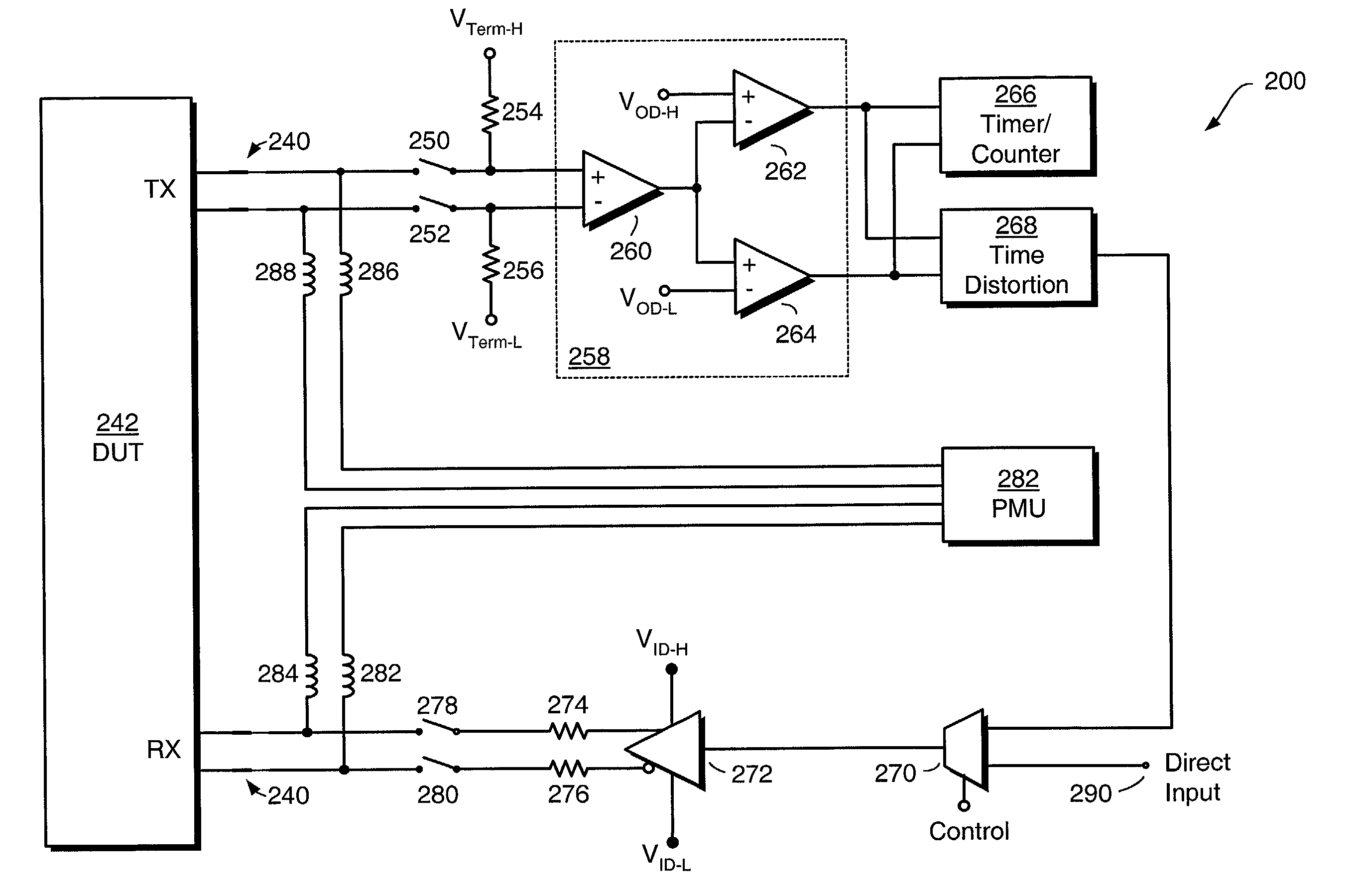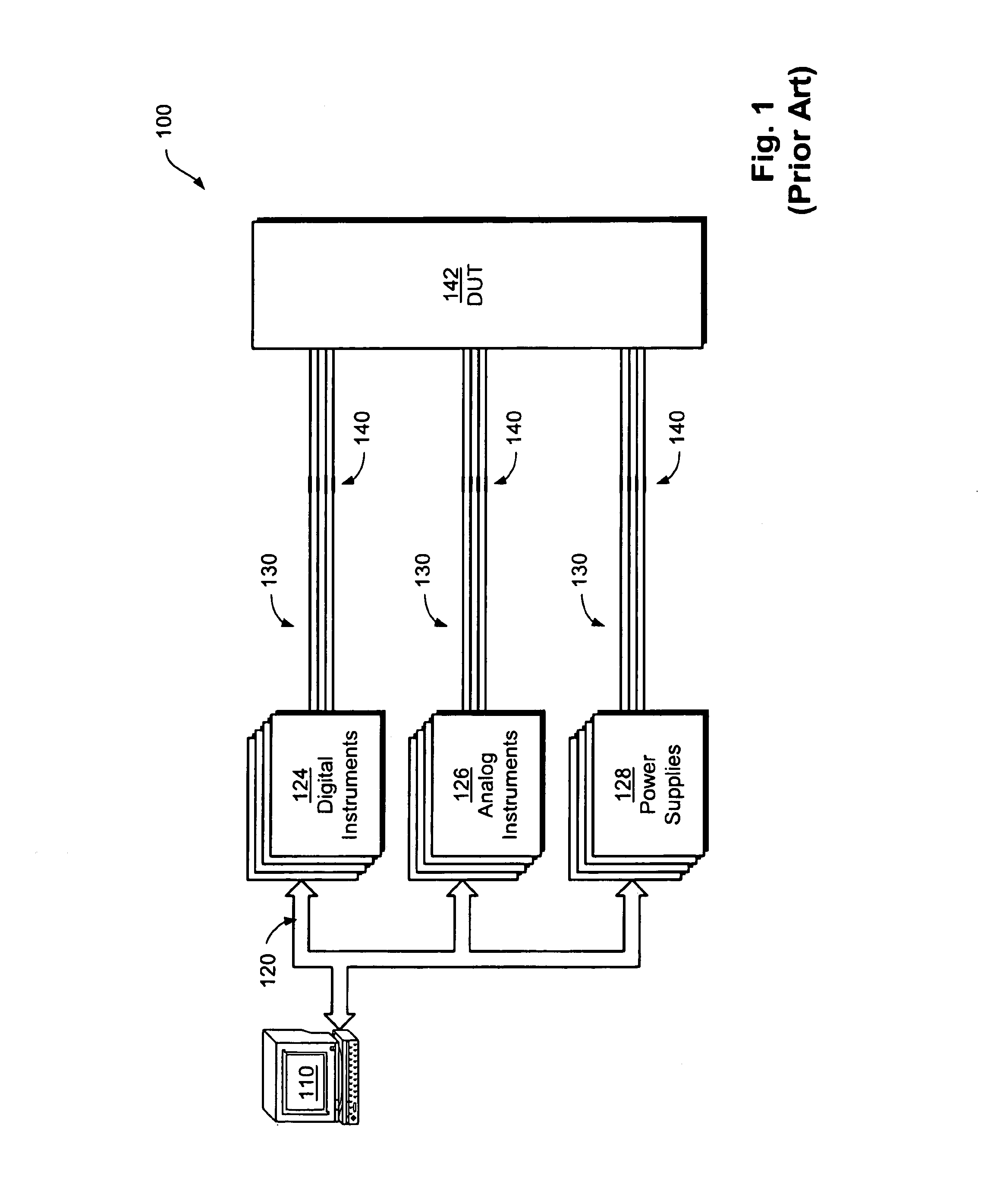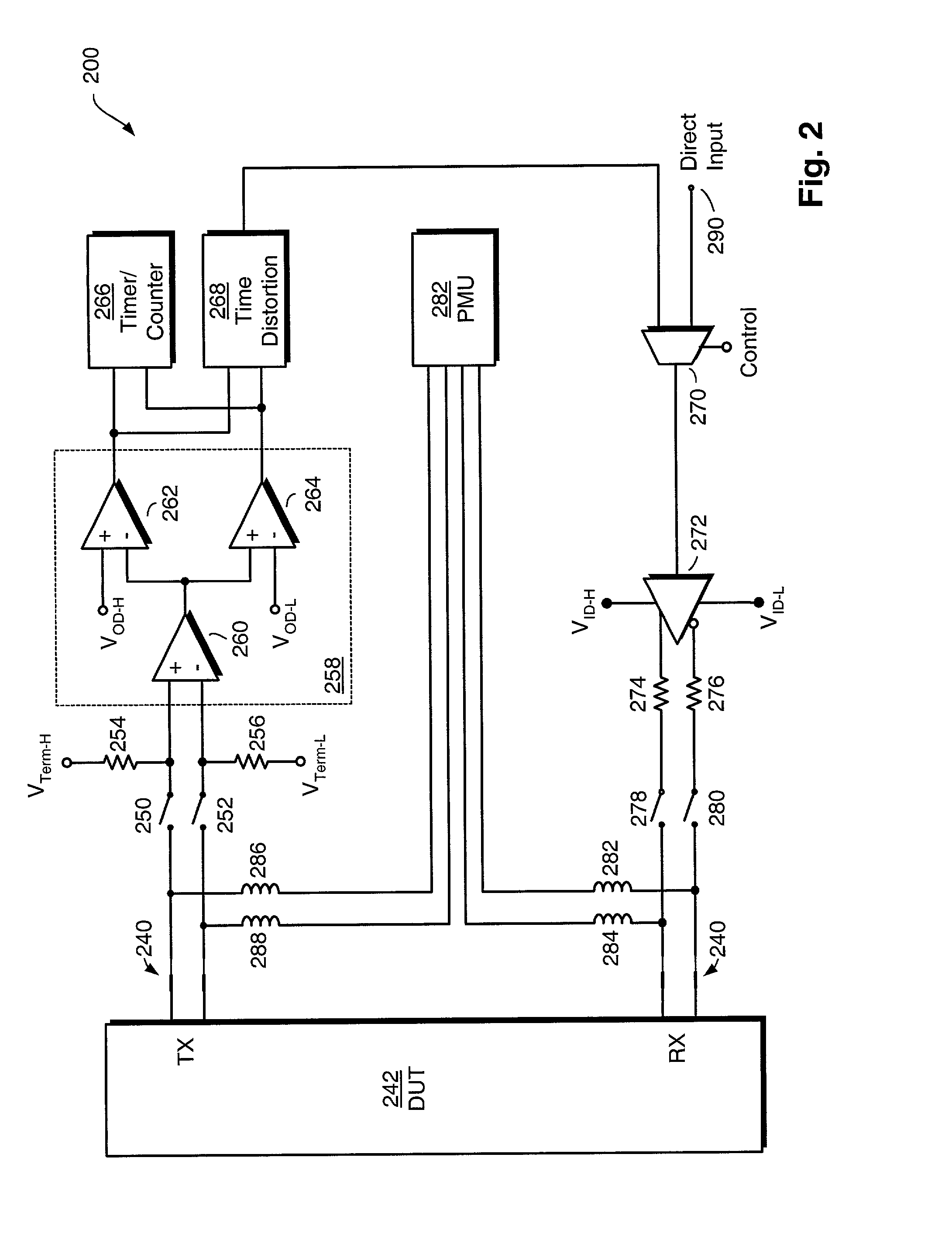Enhanced loopback testing of serial devices
a technology of loopback testing and serial devices, applied in the field of enhanced loopback testing of serial devices, can solve the problems of increasing the number of leads required for forming connections, increasing the complexity of circuit board layout and design, and increasing the complexity of electronic devices. achieve the effect of low cos
- Summary
- Abstract
- Description
- Claims
- Application Information
AI Technical Summary
Benefits of technology
Problems solved by technology
Method used
Image
Examples
Embodiment Construction
Conventional Tester Architecture
[0019]FIG. 1 is a highly simplified illustration of a conventional architecture 100 for an automatic test system, or “tester,” in which the instant invention can be used. A host computer 110 runs a program for testing a device under test (“DUT”) 142 using a variety of electronic hardware. This hardware generally includes digital instruments 124, analog instruments 126, and power supplies 128.
[0020]The electronic hardware is connected to the DUT 142 via a plurality of lines 130 and respective contacts 140. The contacts 140 generally consist of spring-loaded pins that extend from the tester. The pins can be either single-ended or coaxial. The DUT is placed on a device interface board, or “DIB.” The DIB generally includes conductive pads arranged in patterns that match the patterns of spring-loaded pins extending from the tester. The pins make contact with the pads to form connections between the tester and the DUT 142.
[0021]The digital instruments 124 t...
PUM
 Login to View More
Login to View More Abstract
Description
Claims
Application Information
 Login to View More
Login to View More - R&D
- Intellectual Property
- Life Sciences
- Materials
- Tech Scout
- Unparalleled Data Quality
- Higher Quality Content
- 60% Fewer Hallucinations
Browse by: Latest US Patents, China's latest patents, Technical Efficacy Thesaurus, Application Domain, Technology Topic, Popular Technical Reports.
© 2025 PatSnap. All rights reserved.Legal|Privacy policy|Modern Slavery Act Transparency Statement|Sitemap|About US| Contact US: help@patsnap.com



